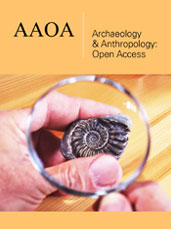- Submissions

Abstract
Archaeology & Anthropology: Open Access
Enhancing Ancient Concrete Durability through Urease-Mediated Calcite Precipitation by Staphylococcus Succinus: Implications for Sustainable Preservation in Archaeological Sites
-
Open or CloseZeenat Khan1* and Daud Khan2
1Department of Biotechnology, Capital University of Science & Technology, Pakistan
2Department of Civil Engineering, Capital University of Science & Technology, Pakistan
*Corresponding author:Zeenat Khan, Department of Biotechnology, Capital University of Science & Technology, Islamabad, Pakistan
Submission: December 10, 2024; Published: December 19, 2024

ISSN: 2577-1949Volume5 Issue3
Abstract
Concrete is a crucial material in construction, but its susceptibility to cracking remains a persistent issue. Microbially Induced Calcite Precipitation (MICP) presents an innovative, eco-friendly approach by harnessing microbes to produce calcite that fills cracks and strengthens concrete. This study aimed to isolate urease-producing bacterial strains with significant calcite-forming potential and optimize conditions for MICP to improve concrete performance. Soil sample was collected from Pakistan, to identify Staphylococcus succinus (T1 strain) as a high calcite producer through its ureolytic activity. The methodology involved isolating bacteria, screening for urease production, and assessing calcite precipitation under different environmental conditions such as salt and alkali levels. The T1 strain showed an impressive calcite precipitation rate of 37.90% at pH 8, coupled with excellent salt and alkali resistance. When added to concrete, the T1 strain enhanced compressive strength from 5.0885MPa to 12.3275MPa and split tensile strength from 3.323MPa to 6.514MPa. X-ray diffraction confirmed the formation of well-defined calcite crystals, supporting effective biomineralization. These findings highlight the potential of Staphylococcus succinus (T1 strain) to improve concrete durability and offer a sustainable, self-healing solution via MICP.
Keywords:MICP; Staphylococcus succinus; Calcite precipitation; Concrete durability; Biomineralization
Highlightsa) Staphylococcus succinus demonstrated high calcite precipitation at pH 8.
b) Significant increase in concrete compressive strength with T1 strain treatment.
c) XRD analysis confirmed well-formed calcite crystals in treated concrete.
d) T1 strain showed robust salt and alkali tolerance in varying environmental conditions.
e) Urease activity of Staphylococcus succinus promoted effective biomineralization.
 a Creative Commons Attribution 4.0 International License. Based on a work at www.crimsonpublishers.com.
Best viewed in
a Creative Commons Attribution 4.0 International License. Based on a work at www.crimsonpublishers.com.
Best viewed in 







.jpg)






























 Editorial Board Registrations
Editorial Board Registrations Submit your Article
Submit your Article Refer a Friend
Refer a Friend Advertise With Us
Advertise With Us
.jpg)






.jpg)














.bmp)
.jpg)
.png)
.jpg)










.jpg)






.png)

.png)



.png)






